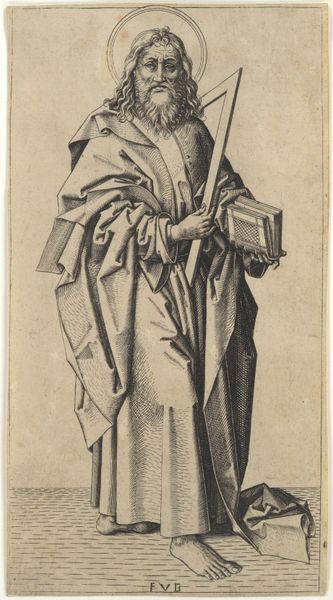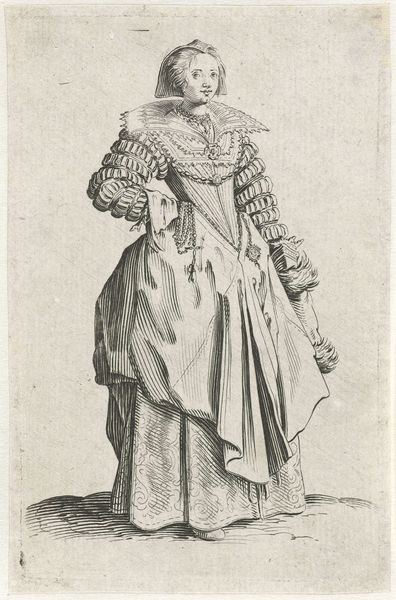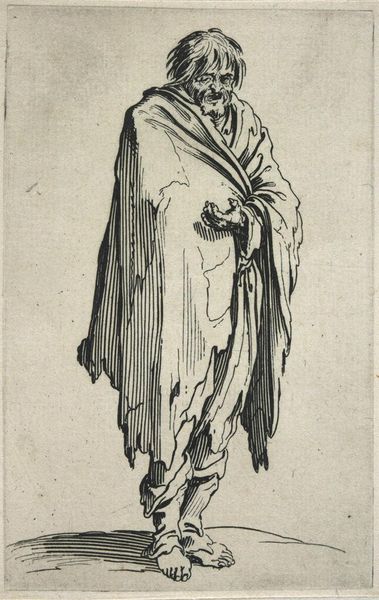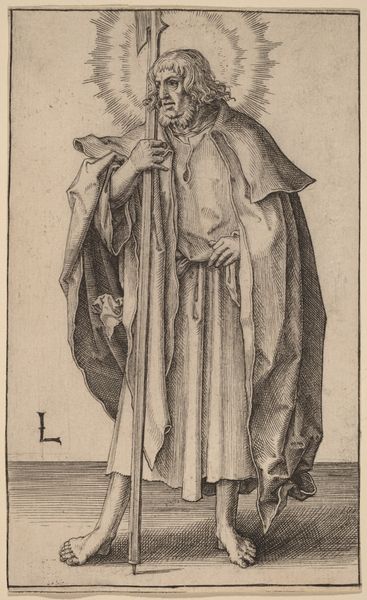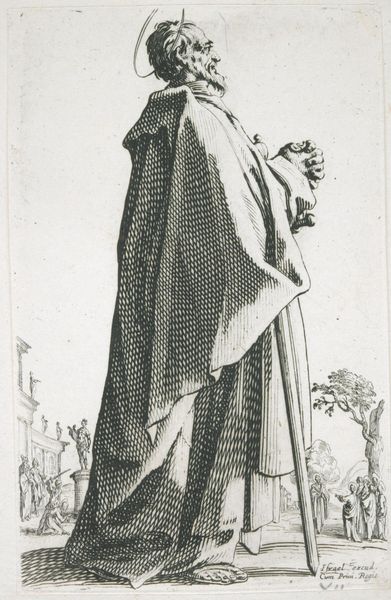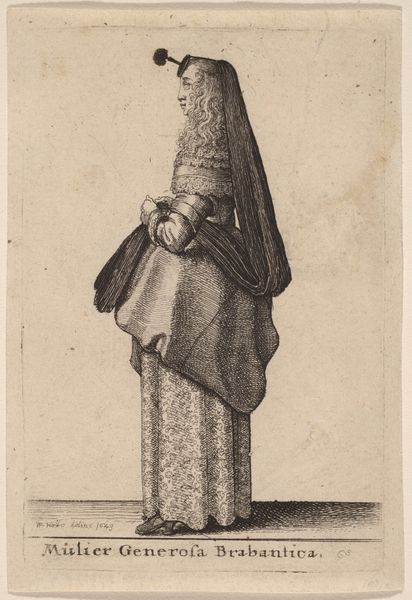
drawing, print, engraving
#
portrait
#
drawing
#
baroque
# print
#
line
#
engraving
Dimensions: height 149 mm, width 97 mm
Copyright: Rijks Museum: Open Domain
Curator: This engraving from 1685, attributed to Sébastien Leclerc I and held at the Rijksmuseum, presents a full-length portrait of a gentleman in a sweeping cape. It’s rendered in stark lines, a style quite common in Baroque printmaking. Editor: My first impression is how much the cape dominates the composition. It almost feels like the figure is secondary to the garment itself, like we’re studying the fashion, not necessarily the man. There is something intriguing and slightly theatrical in it. Curator: It’s interesting you say that. Clothing, especially for the elite, was performative. Leclerc likely understood the social and economic messaging that such elaborate garments communicated. What sort of codes or values do you think are evoked in the lines and folds? Editor: There’s definitely an aspirational quality, given the intricate detail on what seems a quite voluminous length of fabric and delicate touches of lace at the neck. The cape billows, promising an air of grandeur and social authority to whomever wears it, which carries particular psychological power. Curator: The verticality of the cape draws the eye upwards, certainly – perhaps mirroring a perceived social ascent? The baroque era was heavily steeped in status symbols. Leclerc, given the style, makes use of line technique here to present not only the volume of the garment, but also the status attached. Consider the context in which these images circulated; they could dictate taste in clothing and presentation. Editor: Do you think the engraving's limited tonal range diminishes its impact? Could this possibly enhance it in any way? I am unsure if a greyscale makes him stand out, in opposition to the lines on the canvas, that almost obscure the silhouette instead of making him imposing. Curator: On the contrary, I believe it reinforces it. The crisp lines against the blank space imbue it with a clean sense of visual order, reflecting the Baroque ideals. The engraving would originally exist in multiple examples as printed, giving these portraits extended lifespans in visual culture. The bare style offers an insight into the self-perception desired during this historical juncture. Editor: Interesting. Seeing this print has now made me want to examine baroque portraiture further, to better understand the extent of how material possessions defined identity. Curator: It has shown me how much the psychological power of dress codes endures, especially for symbols and their role in status.
Comments
No comments
Be the first to comment and join the conversation on the ultimate creative platform.



